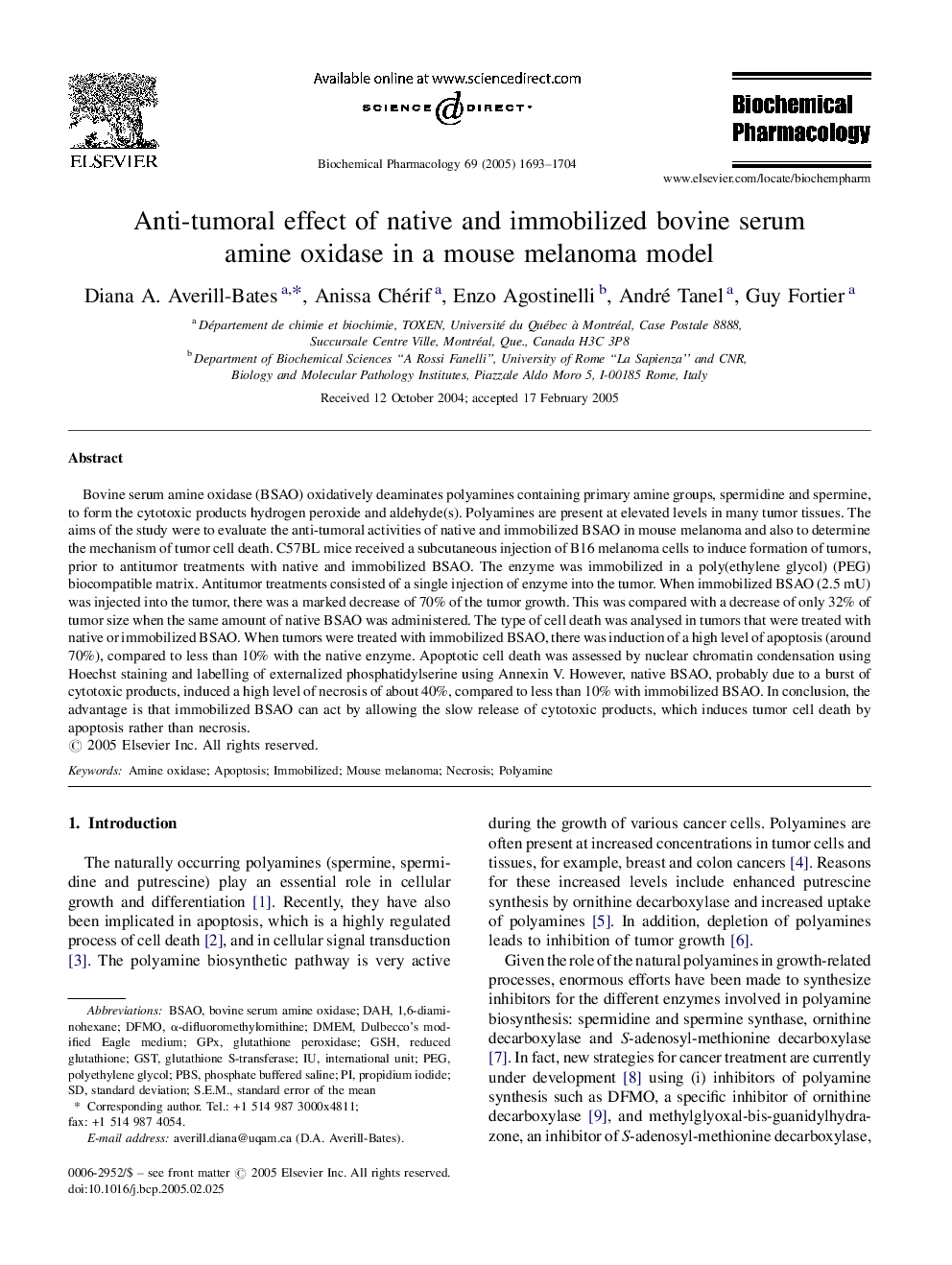| Article ID | Journal | Published Year | Pages | File Type |
|---|---|---|---|---|
| 9002022 | Biochemical Pharmacology | 2005 | 12 Pages |
Abstract
Bovine serum amine oxidase (BSAO) oxidatively deaminates polyamines containing primary amine groups, spermidine and spermine, to form the cytotoxic products hydrogen peroxide and aldehyde(s). Polyamines are present at elevated levels in many tumor tissues. The aims of the study were to evaluate the anti-tumoral activities of native and immobilized BSAO in mouse melanoma and also to determine the mechanism of tumor cell death. C57BL mice received a subcutaneous injection of B16 melanoma cells to induce formation of tumors, prior to antitumor treatments with native and immobilized BSAO. The enzyme was immobilized in a poly(ethylene glycol) (PEG) biocompatible matrix. Antitumor treatments consisted of a single injection of enzyme into the tumor. When immobilized BSAO (2.5Â mU) was injected into the tumor, there was a marked decrease of 70% of the tumor growth. This was compared with a decrease of only 32% of tumor size when the same amount of native BSAO was administered. The type of cell death was analysed in tumors that were treated with native or immobilized BSAO. When tumors were treated with immobilized BSAO, there was induction of a high level of apoptosis (around 70%), compared to less than 10% with the native enzyme. Apoptotic cell death was assessed by nuclear chromatin condensation using Hoechst staining and labelling of externalized phosphatidylserine using Annexin V. However, native BSAO, probably due to a burst of cytotoxic products, induced a high level of necrosis of about 40%, compared to less than 10% with immobilized BSAO. In conclusion, the advantage is that immobilized BSAO can act by allowing the slow release of cytotoxic products, which induces tumor cell death by apoptosis rather than necrosis.
Keywords
PBSBSAODMEMMouse melanomaDFMOα-DifluoromethylornithineGSHGSTDAHGPXS.E.M.1,6-DiaminohexaneDulbecco's modified Eagle Mediumamine oxidaseBovine serum amine oxidaseImmobilizedstandard deviationApoptosisstandard error of the meanPhosphate buffered salineNecrosisinternational unitPropidium iodidePolyaminepolyethylene glycolPEGreduced glutathioneglutathione S-transferaseglutathione peroxidase
Related Topics
Health Sciences
Pharmacology, Toxicology and Pharmaceutical Science
Pharmacology
Authors
Diana A. Averill-Bates, Anissa Chérif, Enzo Agostinelli, André Tanel, Guy Fortier,
